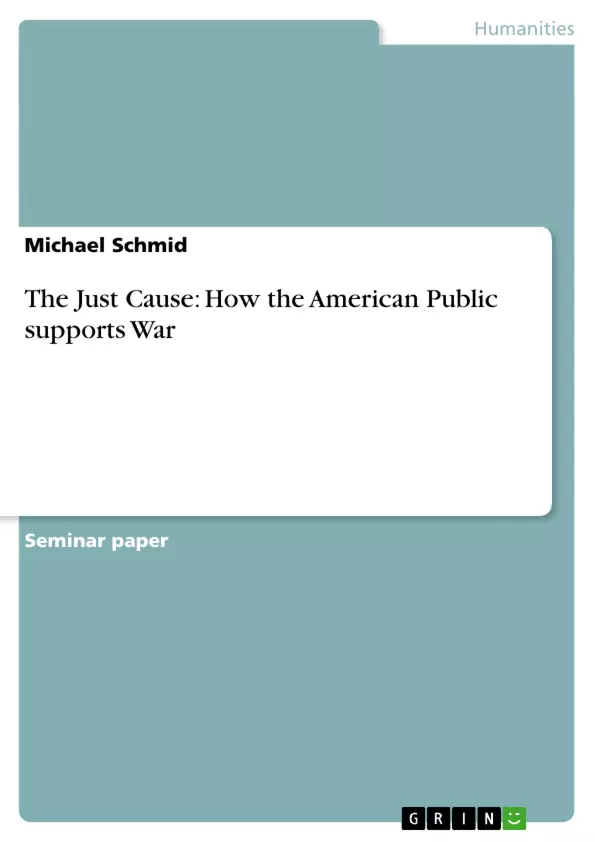Information and statistics about how a great part of the American public felt about certain issues concerning their life or the nation have not been available for very long. Even in the absence of data there have been vast speculations and reports by the news media on public opinion regarding specific policy decisions by the government. In the maiden decades of the republic policymakers and businessmen were always trying to grasp what the public mood was with respect to a particular event or decision. Yet due to the poorly developed infrastructure and lack of technological innovations at that time it was nearly impossible to find out what the thoughts of a larger part of the population were in a reasonable matter of time. The “scientific” public opinion polling that is taking for granted today is not that old. The American Institute of Public Opinion, more commonly known as the Gallup poll, came into existence in 1935 just in time for the 1936 presidential election between Roosevelt and Landon. The Literary Digest, just as the American Institute, attempted to predict the winner of the 1936 election with the data they collected during their research polling. In the end, the Gallup poll was more accurate and predicted with Franklin Roosevelt the correct winner of the election even though the survey was conducted with fewer respondents but with a much more representative selection. Had the Literary Digest been right in its analysis maybe today’s standard polling procedures would be somewhat different.A much older tradition in the history of the United States is the debate about the merits of public participation, majority rule and popular sovereignty. It is a debate as old as the nation about the definition of the proper role of public opinion on affairs of the national government. In this context the emphasis is especially on affairs of foreign policy, issues about military operations in particular.
Ole Holsti identifies the two traditions American thought which define both sides. On the one hand there is a long liberal tradition in the United States which characterizes public opinion as “a force for enlightenment and a necessary if not sufficient condition for sound foreign policy and thus a significant contributor to peaceful relations among nations.” On the other hand there is a long realist tradition which sees the public as a “source of emotional and shortsighted thinking that can only impede the effective pursuit and defense of vital national...
Inhaltsverzeichnis (Table of Contents)
- Public Opinion Research
- Origins of Public Opinion Polls
- Does Public Opinion matter?
- Public opinion in democracies at times of war
- Theories about public support for war
- Mueller's casualty logarithm
- The Rally-Round-The-Flag-Effect
- Best case scenario: A quick and just war
- Examples of public opinion on war
- Korea
- Vietnam
- Who frames support for War?
- The Elites
- The Media
Zielsetzung und Themenschwerpunkte (Objectives and Key Themes)
This text explores the complex relationship between public opinion and support for war in the United States. It examines the origins of public opinion polls, their role in shaping foreign policy decisions, and the theoretical frameworks used to explain public support for military action.
- The role of public opinion in shaping foreign policy decisions
- Theories explaining public support for war
- Historical examples of public opinion on war
- The influence of elites and the media on public opinion
- The debate between liberal and realist perspectives on public opinion
Zusammenfassung der Kapitel (Chapter Summaries)
Chapter 1 examines the development of public opinion polls in the United States, highlighting the importance of accurate and representative polling in gauging public sentiment. The chapter then explores the ongoing debate about the role of public opinion in foreign policy, particularly in the context of war, contrasting the liberal perspective that views public opinion as a force for enlightenment with the realist perspective that sees it as potentially hindering effective national interests.
Chapter 2 delves into theories explaining public support for war. It presents Mueller's casualty logarithm, a model suggesting that public support for war declines with increasing casualties, and the Rally-Round-The-Flag-Effect, which posits that public support for the government tends to increase during times of national crisis. The chapter also discusses the ideal scenario of a quick and just war, where public support is likely to remain high.
Chapter 3 explores specific historical examples of public opinion on war, including the Korean and Vietnam conflicts, illustrating how public sentiment can fluctuate in response to various factors such as casualties, war duration, and perceived justifications for conflict.
Chapter 4 focuses on the powerful role of elites and the media in framing public opinion on war. It examines how these actors can shape public perceptions of conflict, influencing both public support and opposition to military action.
Schlüsselwörter (Keywords)
Public opinion, war, foreign policy, public opinion polls, casualty logarithm, Rally-Round-The-Flag-Effect, liberal theory, realist theory, elites, media, propaganda, framing.
- Quote paper
- Michael Schmid (Author), 2005, The Just Cause: How the American Public supports War, Munich, GRIN Verlag, https://www.hausarbeiten.de/document/72831


